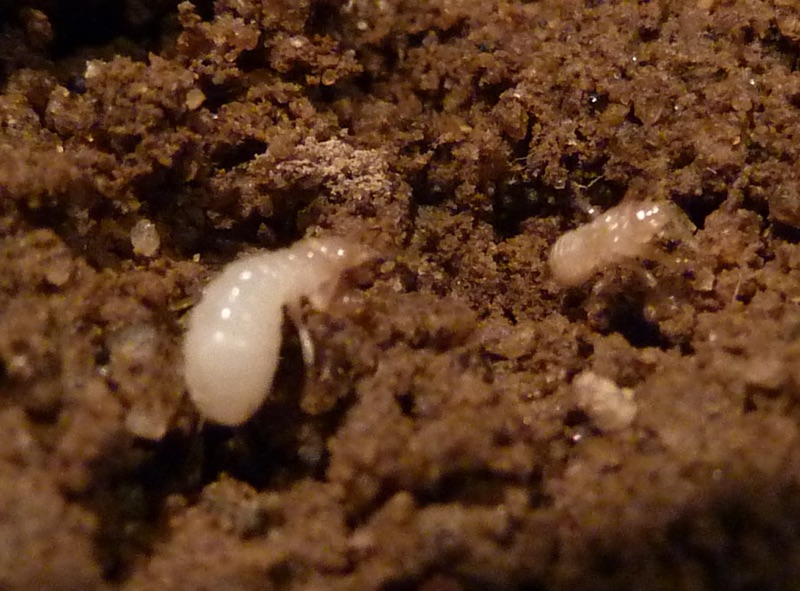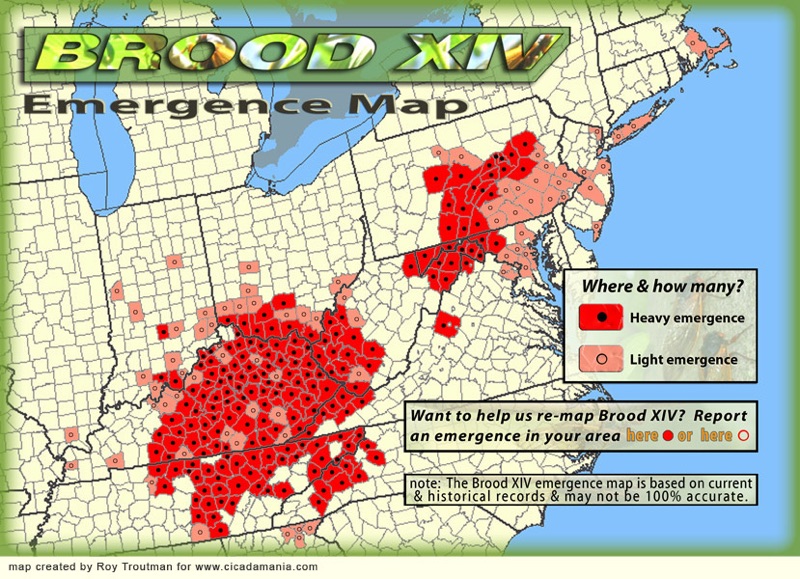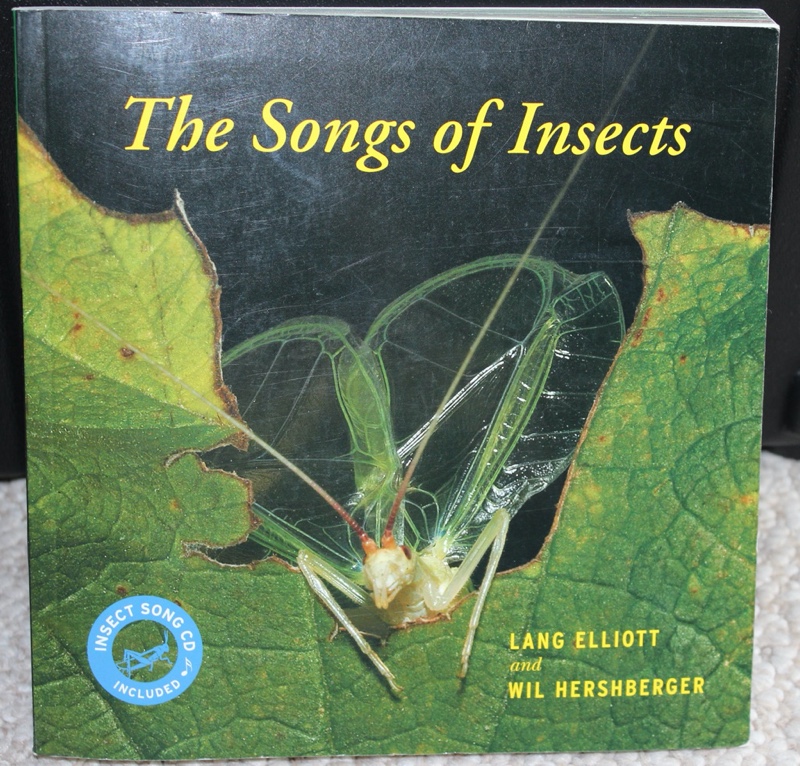The Okanagana rimosa, also known as Say’s Cicada, is a cicada that can be found in the USA in northern states east of the Rockies, like New York, Pennsylvania, Michigan, Wisconsin, Minnesota, North Dakota and all New England states. Say’s cicada can also be found in the Quebec, Ontario, and Manitoba provinces of Canada.
Say’s Cicada is black and orange; orange legs, orange markings on its mesonotum, and orange bands around most segments of its body. Here’s a photo of an adult:
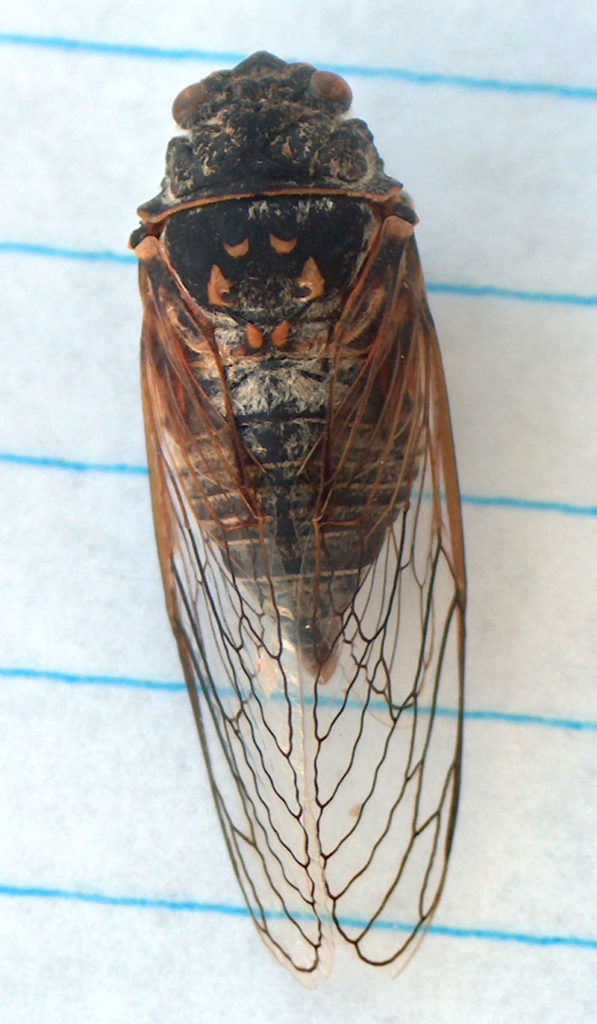
A few weeks ago Elias Bonaros sent us some photos of the exuvia (shed skins) of Okanagana rimosa nymphs that he found while searching for cicadas in Western Massachusetts with Gerry from Massachusetts Cicadas. It’s interesting that the black bands that appear around the segments of the nymph’s body are where we see orange bands in the adult form.
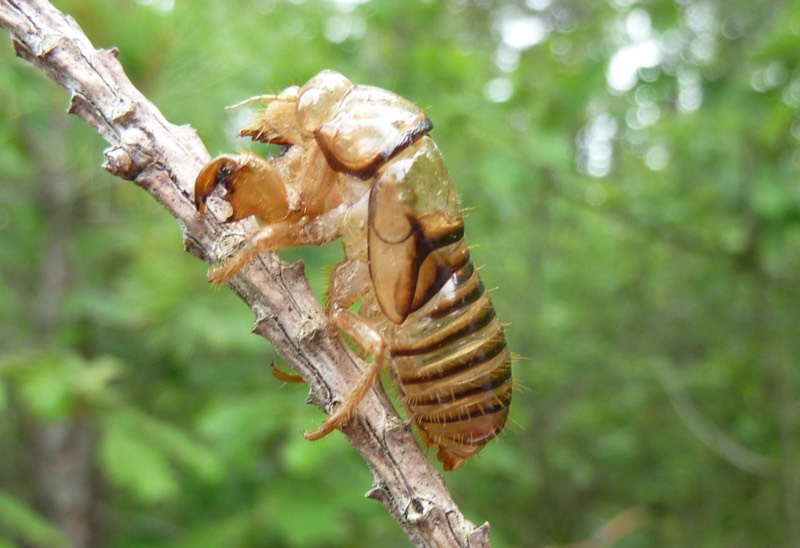
Say’s cicada has a fantastic call that needs to be heard to be appreciated. Visit the Insect Singers website to hear the call of a Okanagana rimosa.
An interesting note about the Okanagana rimosa, it has been showed to have a 9 year life cycle, and appears to be protoperiodical:
“Soper et al (112) showed experimentally that Okanagana rimosa had a life
cycle of 9 years, and that in the field during a 9-year period (1962 to
1970) it was extremely abundant in 4 years and scarce or absent in the
other 5. Heath (32) also studied cicadas of the genus Okanagana and
found several species that appear to be protoperiodical.”
Source.


